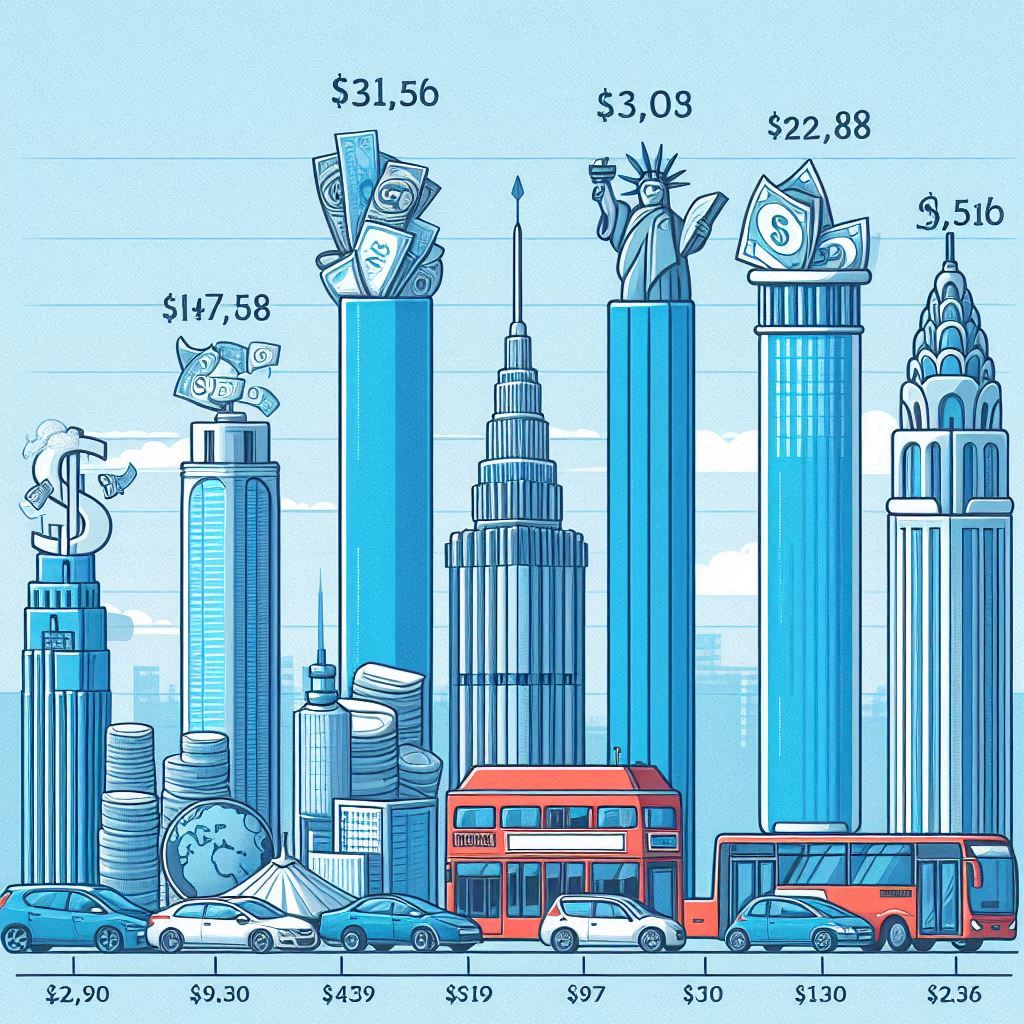Both retirees and foreigners might find Mexico’s cost of living to be both appealing and reasonable. Mexico offers a better standard of living at a lesser cost than many nations in North America and Europe, while prices might vary based on region and personal lifestyle preferences. To guarantee a pleasant and financially secure living, it is imperative to conduct adequate study and make appropriate plans, accounting for things like accommodation, transportation, medical care, and other necessities. Regardless of your preference for a quiet beach town or a busy city, Mexico’s cost of living may offer a great mix of frugality and a good level of life.

This article will examine the numerous facets of living expenditures in Mexico, offering information on a place to live healthcare, basic expenses, and general way of life.
Currency and exchange rates
The Mexican Peso (MXN) is the national currency of Mexico. Understanding the current currency rates is crucial since they have a big influence on your spending limit and buying power. Mexico is a desirable getaway for anyone looking for cost-effectiveness since, despite occasional fluctuations in currency rates, it is typically advantageous for foreign tourists and expats.
Accommodation costs
The location and kind of home have an impact on the price of dwelling in Mexico. The cost of renting is often greater in larger cities like Guadalajara, Monterrey, and Mexico City than in smaller cities and rural regions. It will cost more to rent a unit in the city center than it will live in the countryside or on the outskirts. An apartment with one bedroom far from the city can cost around $250 and $500 per month, whereas an apartment in a fashionable neighborhood may cost between $400 and $800.
Food and grocery expenses
The cheap cost of living and the excellent quality of Mexican food are two major benefits of living there. Local restaurants, called “taquerías” or “loncherías,” provide delicious street tacos for as low as $0.50, making dining out a very affordable option. For individuals who choose to prepare meals at home, shopping costs are often reasonable. When compared to many other nations, basic food staples including grains, beans, fruits, and veggies are fairly priced and provide substantial savings.
Transportation costs
Mexico boasts a vast and well-functioning transportation system that includes cabs, buses, railroads, and ride-sharing platforms. The cost of public transit is relatively inexpensive; in big cities, a single bus or metro ticket can cost as little as $0.50. Because transportation apps like Uber and taxis are reasonably priced, getting about is handy without busting the budget. You should account for the extra costs associated with owning an automobile in Mexico, such as parking, insurance, and petrol.
Healthcare and insurance
A range of commercial and governmental healthcare options are available in Mexico. Residents and citizens can get public healthcare through organizations like the Institute for Social Insurance and Assistance for State Workers and the Mexican Social Security Institute (IMSS). Although private healthcare is more widely accessible and typically costs more, it frequently provides better service and less time on hold. Especially for expatriates, having health insurance that covers both normal and emergency medical expenditures is advised.
Utilities and internet
In general, Mexican utilities including energy, water, and gas are reasonably priced. Depending on use and location, a modest apartment’s monthly cost might range from $30 to $70. Internet access is generally available, although costs vary based on the service provider and the connection speed. An internet subscription might run you anything from $20 to $50 a month on average.
Entertainment and recreation
Mexico is renowned for having a thriving entertainment industry and vibrant culture. There are many options for amusement and relaxation, such as touring historic sites and stunning beaches and taking in concerts, festivals, and nightlife. Entertainment costs vary based on region and personal preferences. While there may be entry prices for certain sights and activities, many public areas and cultural events are free or very inexpensive.
Living a sustainable lifestyle in Mexico
It is not only economical but also ecologically responsible to lead a sustainable lifestyle in Mexico. People may save money over time and help preserve the environment by incorporating green practices into their daily lives. Cutting back on energy use is one practical method to do this. People may drastically reduce their electricity expenses by adopting natural lighting, energy-efficient equipment, and adequate house insulation.
Furthermore, employing water-saving strategies like gathering rainwater and switching to low-flow fixtures can result in significant water bill savings. Adopting eco-friendly modes of transportation, such as riding a bike or taking public transit, lowers carbon emissions while also saving money on gasoline and auto maintenance. People may help the environment and their finances at the same time by implementing these affordable green practices.
You may also find these articles helpful
Cost of living in Denmark – full guide
